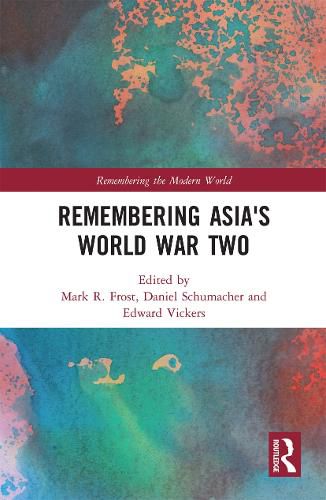Readings Newsletter
Become a Readings Member to make your shopping experience even easier.
Sign in or sign up for free!
You’re not far away from qualifying for FREE standard shipping within Australia
You’ve qualified for FREE standard shipping within Australia
The cart is loading…






Over the past four decades, East and Southeast Asia have seen a proliferation of heritage sites and remembrance practices which commemorate the region’s bloody conflicts of the period 1931-45. Remembering Asia’s World War Two examines the origins, dynamics, and repercussions of this regional war memory boom .
The book analyzes the politics of war commemoration in contemporary East and Southeast Asia. Featuring contributions from leading international scholars, the chapters span China, Japan, Malaysia, Hong Kong, and Singapore, covering topics such as the commemoration of the Japanese military’s comfort women system, forms of dark tourism or commemorative pilgrimages (e.g. veterans’ tours to wartime battlefields), and the establishment and evolution of various war-related heritage sites and museums. Case studies reveal the distinctive trajectories of new and newly discovered forms of remembrance within and across national boundaries. They highlight the growing influence of non-state actors over representations of conflict and occupation, as well as the increasingly interconnected and transnational character of memory-making. Taken together, the studies collected here demonstrate that across much of Asia the public commemoration of the wars of 1931-45 has begun to shift from portraying them as a series of national conflicts with distinctive local meanings to commemorating the conflict as a common pan-Asian, or even global, experience.
Focusing on non-textual vehicles for public commemoration and considering both the local and international dimensions of war commemoration within, Remembering Asia’s World War Two will be a crucial reference for students and scholars of History, Memory Studies, and Heritage Studies, as well as all those interested in the history, politics, and culture of contemporary Asia.
$9.00 standard shipping within Australia
FREE standard shipping within Australia for orders over $100.00
Express & International shipping calculated at checkout
Over the past four decades, East and Southeast Asia have seen a proliferation of heritage sites and remembrance practices which commemorate the region’s bloody conflicts of the period 1931-45. Remembering Asia’s World War Two examines the origins, dynamics, and repercussions of this regional war memory boom .
The book analyzes the politics of war commemoration in contemporary East and Southeast Asia. Featuring contributions from leading international scholars, the chapters span China, Japan, Malaysia, Hong Kong, and Singapore, covering topics such as the commemoration of the Japanese military’s comfort women system, forms of dark tourism or commemorative pilgrimages (e.g. veterans’ tours to wartime battlefields), and the establishment and evolution of various war-related heritage sites and museums. Case studies reveal the distinctive trajectories of new and newly discovered forms of remembrance within and across national boundaries. They highlight the growing influence of non-state actors over representations of conflict and occupation, as well as the increasingly interconnected and transnational character of memory-making. Taken together, the studies collected here demonstrate that across much of Asia the public commemoration of the wars of 1931-45 has begun to shift from portraying them as a series of national conflicts with distinctive local meanings to commemorating the conflict as a common pan-Asian, or even global, experience.
Focusing on non-textual vehicles for public commemoration and considering both the local and international dimensions of war commemoration within, Remembering Asia’s World War Two will be a crucial reference for students and scholars of History, Memory Studies, and Heritage Studies, as well as all those interested in the history, politics, and culture of contemporary Asia.